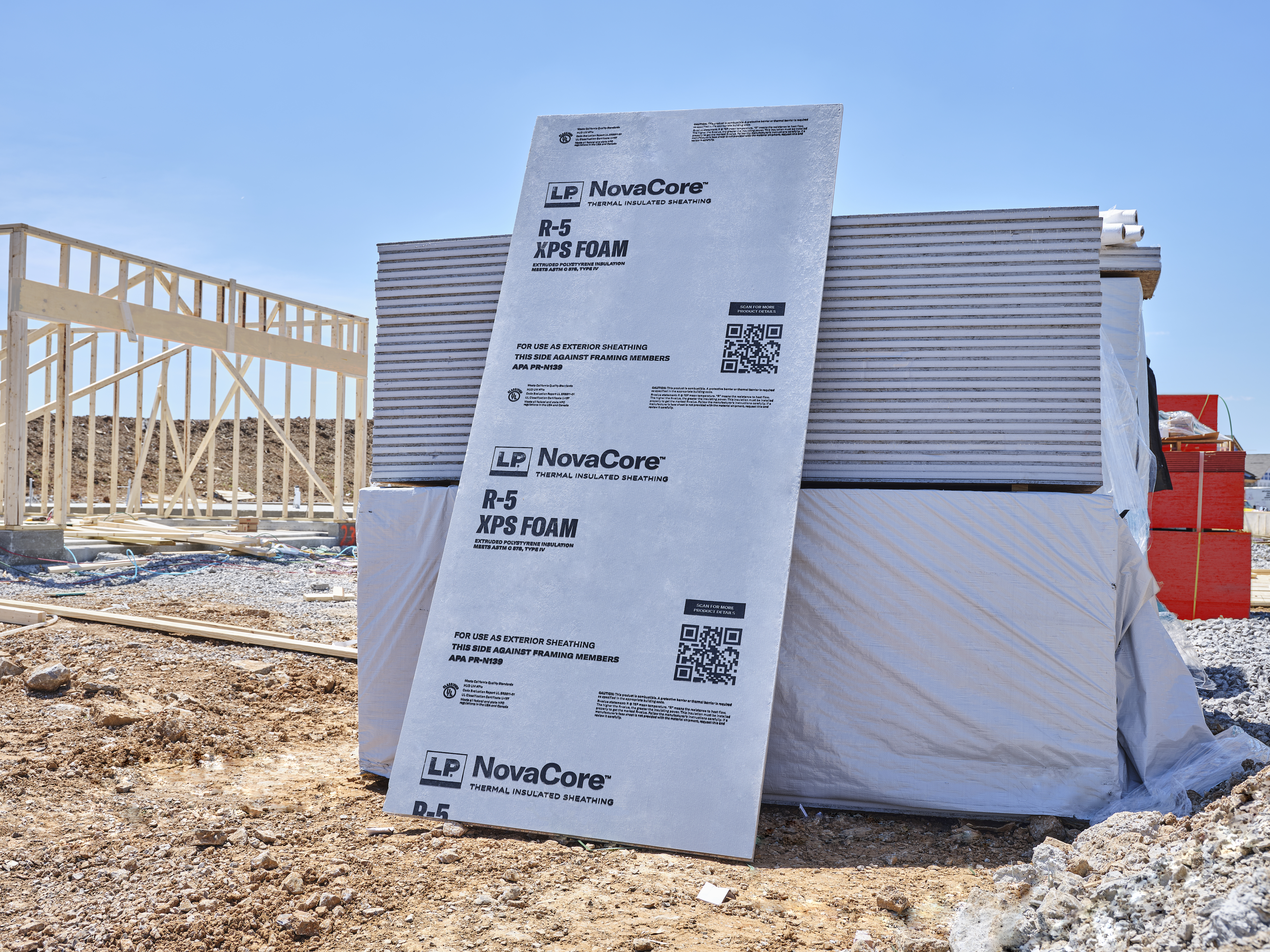Menu
Q&A: How Home Orientation Impacts Continuous Insulation
There’s a lot to consider when it comes to building an energy-efficient home for your clients and the many nuances that change with each build—including its orientation to the sun. We sat down with Neil Freidberg, Building Science Manager at LP, to unpack the impact of home orientation on continuous insulation needs.
Q: What is the relationship between the orientation of a structure, its walls and continuous insulation?
A: You insulate differently based on the direction a wall faces and how the sun hits-and heats-your structure. Take a home that is built with each wall facing exactly north, south, east and west, for example. The east, south and west sides of the building are going to see a lot of heat gain from the sun whereas the north side will see less, potentially needing a different amount of insulation than the sun-facing sides to keep the internal temperature balanced throughout.
Q: Do I need more or less insulation for north-facing walls?
A: Ultimately, it depends on your climate. In places with high heat such as desert climates the goal is usually to keep heat out, so you'll need more insulation on the sun-facing walls. However, in the north where it is much cooler your goals will likely shift to keeping heat in, so your north-facing wall may need more insulation than the others.
Q: What materials can help regulate temperature?
A: LP NovaCore® Thermal Insulated Sheathing is a great base for the initial thermal bridging. Made with Owens Corning® FOAMULAR® NGX™ XPS foam, it provides continuous insulation at an R5 value per inch without the long-term R-value deterioration associated with other foam insulation products. Additional panels of various R-values are currently in development.

Q: Can you use LP NovaCore sheathing on its own?
A: If R5 is the right continuous insulation R-value base for your walls, you may be able to use LP NovaCore sheathing on its own. However, since different wall orientations often have different insulation needs, one wall may use just LP NovaCore panels while another may need the panels as a base and additional insulation with it.
Q: What other factors may play a role in continuous insulation?
A: Most homes are not perfectly oriented with walls facing exactly north, east, south and west, so taking the entire environment into consideration is crucial. Is it on a hill? In a valley? How do the trees impact the amount of sun a structure gets? What about the neighboring homes or buildings?The same goes for the architecture of the house. For example, if your client has a great view toward the north that they want their home to face, it will require windows on the side of the house that is already the coldest. With that in mind, you'll want to use more insulation on this wall to balance out the internal temperature, and so on.
When approaching a new build, remember to consider the climate and orientation of the house to most efficiently insulate the structure.
Now that you’ve leveled up your knowledge of thermal performance, it’s time to keep elevating your build. Discover more from the LP® Structural Solutions portfolio here.
Continue Reading
Resiliency Solutions
5 minHOW A RADIANT BARRIER CAN IMPROVE BURIED DUCT PERFORMANCE
There are several insulation methods based on attic design, but ducts placed over the bottom of truss chords and buried under insulation in a vented attic is a popular builder option.
Continue ReadingSustainability Solutions
8 minHow to Drive Effective Communication and Collaboration on the Jobsite
Every jobsite has a ton of moving parts, from product shipments, supplies, and schedules to subcontractors and homeowners. It's no wonder that many project teams can struggle to maintain quality jobsite communication and collaboration throughout the building process.
Sustainability Solutions
6 minCarbon Negative, Future Positive: LP® Structural Solutions Portfolio Releases Environmental Product Declarations
In an era where environmental responsibility is paramount, we are proud to announce a remarkable achievement: the LP® Structural Solutions portfolio has been officially designated as carbon negative. This milestone is a testament to our unwavering commitment to redefining construction materials for the better with a focus on sustainability, resiliency and groundbreaking advancements.
Sustainability Solutions
8 minWhy Build With Carbon Negative Building Materials?
In our pursuit of sustainable and environmentally friendly products, we completed five LCAs and EPDs for our LP® Structural Solutions portfolio. Along with LP® SmartSide® Trim & Siding, these EPDs demonstrate the carbon negativity of our products. That means that our products store more carbon than is released during their entire life cycle, making us a meaningful part of the climate solution.